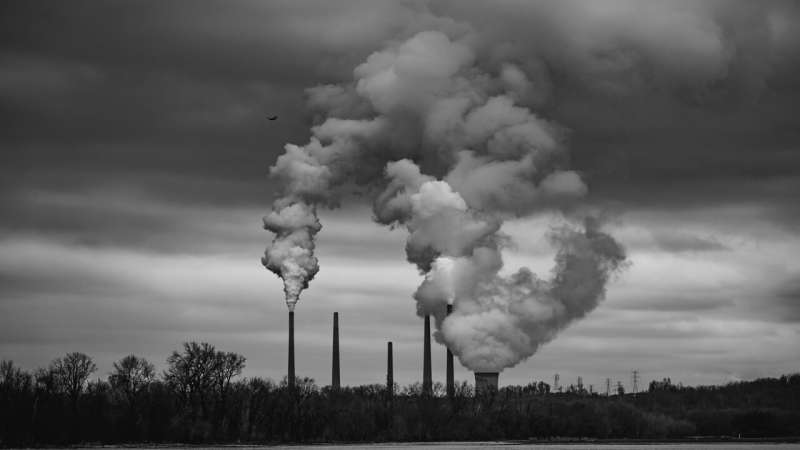Only 15 countries have met the latest Paris agreement deadline. Is any nation serious about tackling climate change?

The latest deadline for countries to submit plans for slashing the greenhouse gas emissions fueling climate change has passed. Only 15 countries met it—less than 8% of the 194 parties currently signed up for , which obliges countries to submit new proposals for eliminating emissions every five years.
Known as nationally determined contributions, or NDCs, these plans outline how each country intends to help limit average global temperature rise to , or at most 2°C. This might include cutting emissions by generating more energy from wind and solar, or adapting to a heating world by restoring wetlands as protection against more severe floods and wildfires.
Each new NDC should outline more stringent emissions cuts than the last. It should also show how each country seeks to mitigate climate change over the following ten years. This system is designed to progressively strengthen (or ) global efforts to combat climate change.
The February 2025 deadline for submitting NDCs was set nine months before the next UN climate change conference, in Belém, Brazil.
Without a comprehensive set of NDCs for countries to compare themselves against, there will be less pressure on negotiators to raise national ambitions. Assessing how much money certain countries need to decarbonize and adapt to climate change—and how much is available—will also be more difficult.
While countries can (and some will) continue to submit NDCs, the poor compliance rate so far suggests a lack of urgency that bodes ill for avoiding the worst climate outcomes this century.
Who submitted?
The NDCs on time include the United Arab Emirates, the UK, Switzerland, Ecuador and a number of small states, such as Andorra and the Marshall Islands.
COP30 host Brazil submitted a pledge to reduce greenhouse gas emissions by , compared to 2005 levels. This is up from its previous commitment, a 37% reduction by 2025 and 43% by 2030. Unfortunately, Brazil is not on track to meet its 2025 target and has set a more recent emissions baseline that will make any reductions more modest than they'd otherwise be.
Japan aims to in 2035 and 73% in 2040, compared to 2013 levels. Japan's previous target was for a 46% reduction by 2030. This demonstrates how the ratchet system is supposed to work.
The UK's NDC, which pledges to reduce all greenhouse gas emissions by at least 81% by 2035, compared to 1990 levels, was described by independent scientists as "" with limiting global heating to 1.5°C.
The US had submitted a plan to reduce net greenhouse gas emissions by 61–66% below 2005 levels by 2035. However, this was before Donald Trump (for the second time), so the commitment of one of the world's is in doubt.
Who didn't submit?
Some of the world's largest emitters failed to submit new NDCs, including China, India and Russia.
India pledged to reduce its emissions by 35% below 2005 levels by 2030 at the signing of the Paris agreement. All of the country's subsequent NDCs have been rated as "" by independent scientists. India's recent national budget announcement for climate mitigation and adaptation measures.
China also made in 2015 with its aim to lower its COâ‚‚ emissions by 65% by 2030, from a 2005 baseline. However, China has been responsible for over since the Paris agreement was signed. China and the US also on climate change in 2022. Increased economic competition between these two nations has resulted in export control restrictions and tariffs which have made green technologies like electric vehicles more expensive, which is certain to slow down the shift from fossil fuels.
Russia joined the Paris agreement in 2019. Its first NDC was labeled "" by scientists, and its follow-up in 2020 did not include increased targets. Russia is maximizing the extraction of resources such as , and , and its includes plans to sink several oil wells on the continental shelf.
With the U.S.'s 2025 NDC in limbo, President Trump is eyeing mineral reserves in and , further ramping up and cutting .
The European Union could have positioned itself as a leader in global climate action, in lieu of US involvement. But the EU, which submits NDCs as a bloc alongside individual country submissions, also failed to submit on time.
Global shifts
The failure of most nations to submit new emission plans suggests that the era of cooperation on climate change is over. The largest and most powerful of these nations are growing their military and diplomatic presence around the world, particularly in countries with large reserves of critical minerals for electric vehicles and other technology relevant to decarbonization. The lack of NDCs from these nations may be less a matter of middling green ambitions, and more an attempt to disguise their planned exploitation of other countries' resources.
If countries keep failing to submit enhanced NDCs, or even withdraw from their commitments entirely, scientists warn that global heating could reach a catastrophic 4.4°C by 2100. This assumes the continued, unabated use of fossil fuels, with little regard for the climate.
In a more optimistic scenario, countries could limit warming to . This will require global cooperation and significant investment in green technology, and entail a transition to net zero emissions by mid-century. This is a process that must include everyone. Simply having the most powerful nations decarbonize by exploiting and hoarding resources will imperil this critical target.
The actual outcome will probably fall somewhere between these two scenarios, depending on forthcoming NDCs and how quickly and thoroughly they are implemented. All of the scenarios envisaged by climate scientists will involve warming continuing for decades.
The effects of this warming will vary, however, based on the path we choose today.
Provided by The Conversation
This article is republished from under a Creative Commons license. Read the .![]()



















